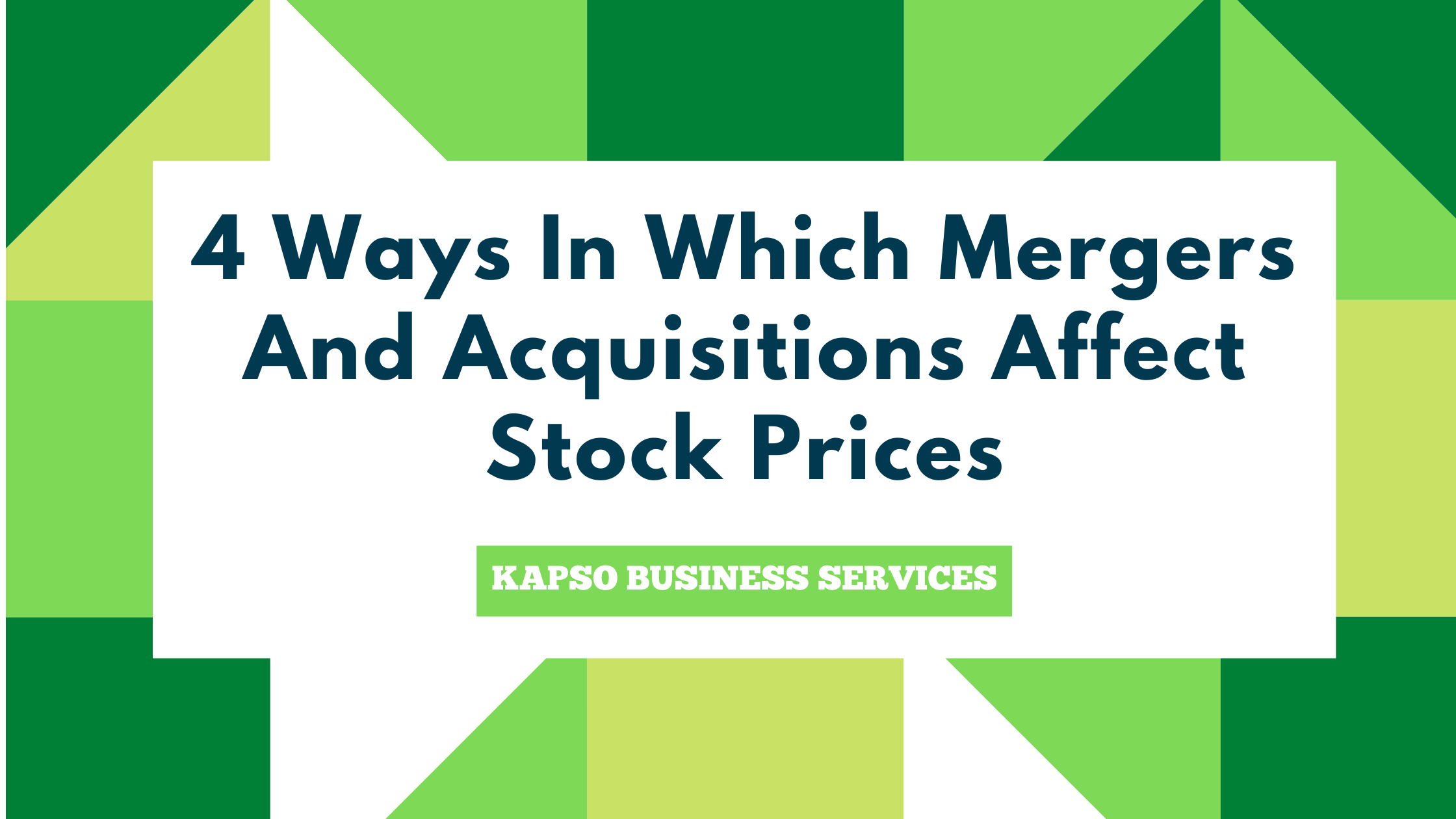4 Different Ways In Which Share Prices React To M&A
There is varied academic literature on the relation that exists among M&A and stock prices. For quite a long time, academics and traders alike have attempted to nail down how mergers and acquisitions affect stock price over the short and long haul, and whether the cycle adds value for those on the purchasing and selling side. Beneath, we take a gander at some of the main ways by which transactions affect stock prices.
1. Stock price volatility
Volatility in the stock price of both the purchaser and the seller, is generated just by the mere mention that a company has become a target for an acquisition or a merger, as traders and analysts attempt to establish what the deal means for strategy, how the purchaser will pay for it, regardless of whether the target company is benevolent or antagonistic to the takeover and whether it might significantly trigger a greater proposal from another prospect.
2. Target company stock’s reaction to a bid
Acquisitions will in general drive up the value of the target company’s stock. The rationale here is clear: To acquire the company. purchasers are invariably compelled to pay a premium (for example a price above the current market price). In this manner, the recorded stocks will ascend in value as soon as there’s even a slight mention of a possible deal. As soon as the proposed price of the deal emerges, the stock will merge on that price as traders try to maximize their profits from the potential deal.
3. Buying company stock’s reaction to a bid
The way in which the stock of the purchasing company reacts to an offer is more subtle than that of a selling company. In this case, it comes down to how shareholders and traders on the market see the deal. They’ll want to purchase more of the stock if they accept that the deal will generate value – even after the premium is considered, thus pushing up its value.
But if they view the deal to cause a decline in value, they’ll start offloading their stock, which will push down its value. However, there’s usually an element of judgment required, and spectators are part about whether the deal will create or demolish value for the purchasing firm.
4. When two companies merge
The primary thing is that mergers arerare. Most ‘mergers’, to a greater or lesser degree are acquisitions, where the target company has more leverage in the recently formed company than they would in the event that it were charged as a through and through acquisition. At the point when the new company which combines the two companies is formed, a similar rationale to what exactly happens on account of the purchasing company’s stock can be seen.
If Shareholders believe the merger is going to be successful, the market capitalization of the new company – as measured by its share price will not be worth more than the cumulative value of the two companies’ stock when they had not merged (‘1+1=3’ is what all M&A practitioners look forward too).
Conclusion
In the M&A industry market sentiment can be easily evaluated in the case of Publicly listed stocks. Even though the market may not be always right, it is one of the best indicators we can use to analyse the situation.
When managers of listed companies on the purchasing side of a transaction see that the market is selling its stock after news of acquisition has emerged, they should analyse whether they Over Paid or Maybe pair a higher premium then they should have for the deal.



